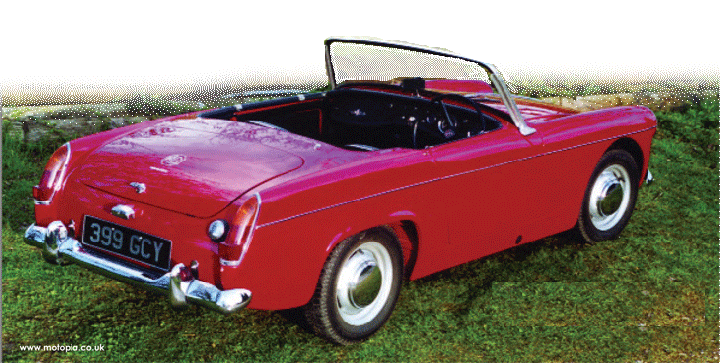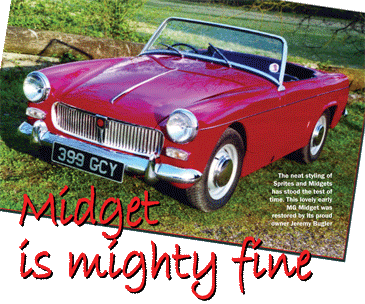
MG Midget
and Austin Healey Sprite
Fancy an affordable sports car that's fun to drive and easy to own? Classics author Kim Henson guides us
through the buying process
WEARING the famous MG badge, Midgets (together with equivalent Austin Healey Sprite models) are budget-priced classic sports cars offering much more hood-down fun per mile than their size and performance potential might suggest.
Even today Sprites/Midgets are still relatively cheap to buy, and fuel costs are as low as they can be for a sports car.
The original 948cc Austin Healey 'Frogeye' Sprite (the basis for all later Sprites and equivalent Midgets, which essentially differ only in badging and trim) was cleverly designed and produced around Austin A35 components, and appeared in May 1958.

FACTS AND FIGURES:
Built: Mark I 948cc: 1961-62
Mark I 1098cc: 1962-64
Mark II 1098cc: 1964-66
Mark III: 1966-74 1500: 1974-79
Bodywork: Two-door open sports car
Engine: All are overhead valve, in-line four-cylinder units; BMC 'A' Series: • 948cc (Mark I): 47 bhp • 1098cc: Mark I, 56 bhp; Mark II, 59 bhp • 1275cc (Mark III): 65 bhp • Triumph-derived: 1493cc (Midget 1500): 65 bhp
0-60 mph: 12-20+ sec
Top speed: 85-100+ mph
Typical fuel consumption: 30-45 mpg
PRICES*:
948/1098/1275cc: Rough, £1200. Good,
£2500. Top Notch, £5000
1500: Rough, £1000. Good, £2000+. Top
Notch, £4000
It is essential that the front suspension receives regular lubrication; ideally re-greasing should be carried out at least every 1,000 miles, or the king pins and their bushes, also the lower threaded trunnions, will wear rapidly (eventually resulting in MoT test failure).
When viewing a car, check the suspension visually for signs of recent attention with a grease gun.
The engines are easy to work on, although access to the lower reaches of the engine bay is restricted. Asking prices for most Sprites and Midgets are still (usually) reasonable.
Organisations catering for the cars include:
Austin Healey Owners' Club:
• www.austin-healey-club.com
Midget and Sprite Club:
• www.midgetandspriteclub.co.uk
MG Owners' Club:
• www.mgownersclub.co.uk
MG Car Club: • www.mgcc.co.uk
*Values estimated at March 2008.


Copyright Motopia © Contact Us